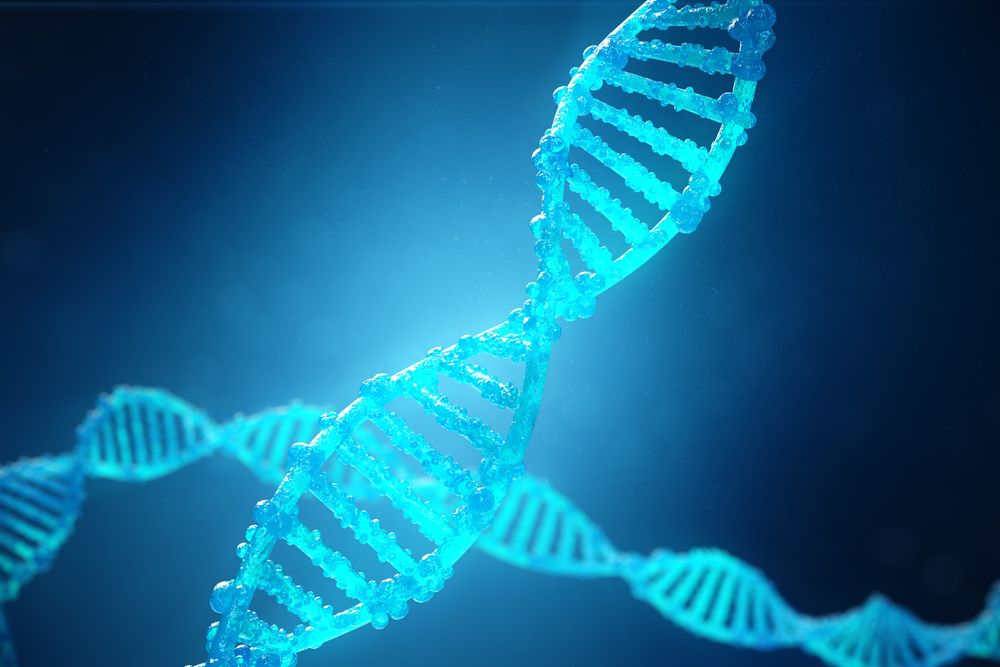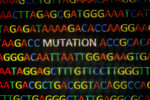Study Links New Mutations in Non-coding Regions to Hypoparathyroidism
Written by |

Rost9/Shutterstock
Some mutations in non-coding regions of the calcium-sensing receptor (CASR) gene change the function of the resulting protein and are associated with hypoparathyroidism, a study suggests.
While mutations in non-coding regions — DNA sections that do not provide instructions to produce a protein — do not directly alter the composition of a protein, they may still affect regulatory elements involved in protein production or assembly.
Seven new mutations in the CASR gene, five located in non-coding regions, were identified in four patients with mild to moderate hypoparathyroidism, three of whom also carried non-coding mutations in another hypoparathyroidism-related gene, GNA11.
These findings highlight the potential damaging effects of mutations in non-coding regions of hypoparathyroidism-related genes and the need for future studies to clarify the functional consequences of these new mutations.
The study, “Hypoparathyroidism Associated with the DNA Variants in Non-Coding Sequence Region of Calcium-Sensing Receptor,” was published in the journal Endocrine and Metabolic Science.
Hypoparathyroidism is caused by abnormally low levels of the parathyroid hormone (PTH), which regulates calcium and phosphate balance in the blood. PTH deficiency leads to low calcium levels and high phosphorus levels in the blood, as well as vitamin D deficiency.
While the disease is mainly associated with a surgery in the neck region — where the parathyroid glands, responsible for PTH production, are located — it can also be caused by genetic mutations in several genes associated with hypoparathyroidism, such as CASR, GNA11, PTH, and GCM2.
The CASR gene provides the instructions to produce a protein, CaSR, that stimulates PTH release in response to low calcium levels, while GNA11 generates a protein that is a key mediator of CaSR signaling.
Some CASR mutations may result in a faulty calcium sensor that wrongly considers calcium levels to be high in the blood, reducing PTH production.
The PTH gene encodes the parathyroid hormone, and the GMC2 gene is involved in the development of parathyroid glands and is key for PTH production.
Whether hypoparathyroidism’s severity is influenced by the type and/or effect of these mutations remains largely unclear. Clarifying this may help optimize clinical management and treatment in this patient population.
Now, a team of researchers in China and France set out to describe the laboratory and clinical features of 10 patients with hypoparathyroidism not related to neck surgery and assess the presence of mutations in the CASR, GNA11, PTH, and GCM2 genes.
The patients, six of whom were women, had mild to moderate hypoparathyroidism, and were 47 years old on average. All had uncontrollable twitching of muscles, six showed calcium deposition in the brain, and three had cataracts — when the eye’s natural lens becomes cloudy.
Seizures, calcium deposits in the colon, and gout (a condition that causes sudden, severe joint pain) each were also present in a patient.
Genetic testing of the seven patients willing to undergo such testing identified 15 mutations in hypoparathyroidism-associated genes in four individuals.
All four patients carried at least one of seven newly identified CASR mutations: c.93G>A, c.3443A>G, c.3506G>C, c.3772A>T, c.4286C>G, c.4805C>T/C, and c.4910T>C. All were present in both copies of the CASR gene, in which case they are called homozygous mutations (they are called heterozygous when found in only one of the copies).
If they cause changes in the resulting protein, homozygous mutations are typically more likely to exert greater effects, whereas in heterozygous mutations, the variant copy can normally be at least partially compensated by the healthy gene copy.
Three patients carried both the c.3772A>T and c.4286C>G mutations, which were combined with c.3506G>C and c.4805C>T in two of them. The c.3506G>C mutation was also found alone in one patient.
Only two of these CASR mutations were located in the gene’s coding regions, with the other five being present in non-coding regions, mostly at the end of the gene’s sequence.
In addition to CASR mutations, three patients carried at least one of six heterozygous mutations in the GNA11 gene, all located within non-coding regions. Patients did not share any GNA11 mutation.
Moreover, two heterozygous, non-coding-region mutations in the PTH gene were detected in a patient with multiple CASR homozygous mutations and a single heterozygous GNA11 mutation.
No GCM2 mutations were detected in any of the seven patients tested.
The researchers then assessed whether mutations within non-coding regions of the CASR gene could affect the function of the resulting protein. They tested this by forcing lab-grown human cells to produce the CaSR protein using either the healthy gene or a CASR gene containing the c.3506G>C, c.3772A>T, c.4286C>G, and c.4805C>T mutations.
Results showed that both the healthy and mutated CASR gene produced similar CaSR protein levels. However, CaSR resulting from the mutated gene showed increased binding to calcium, activating its signaling pathway in the presence of lower calcium levels relative to the normal CaSR.
These findings highlighted that mutations outside the CASR coding region can cause functional changes in the resulting CaSR protein. However, whether this was a combined effect of the four mutations, or the result of only one mutation remains unclear.
Future studies, evaluating each mutation separately, are needed to clarify this and to better understand how these mutations affect CaSR.
In addition, “further validation of the DNA variants identified in GNA11 may help to know if the similar case existed in GNA11,” the researchers wrote.
They also noted that while the number of patients tested was small and prevented statistical analysis, all patients carrying mutations in disease-associated genes were younger than those without mutations (average age of 29 vs. 53 years).
Larger and long-term studies are needed to investigate whether these mutations influence disease onset, clinical features, and treatment responses, which may help to optimize treatment strategies for hypoparathyroidism patients.







